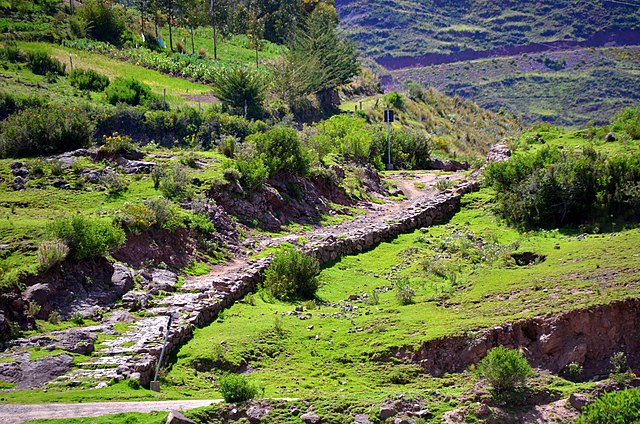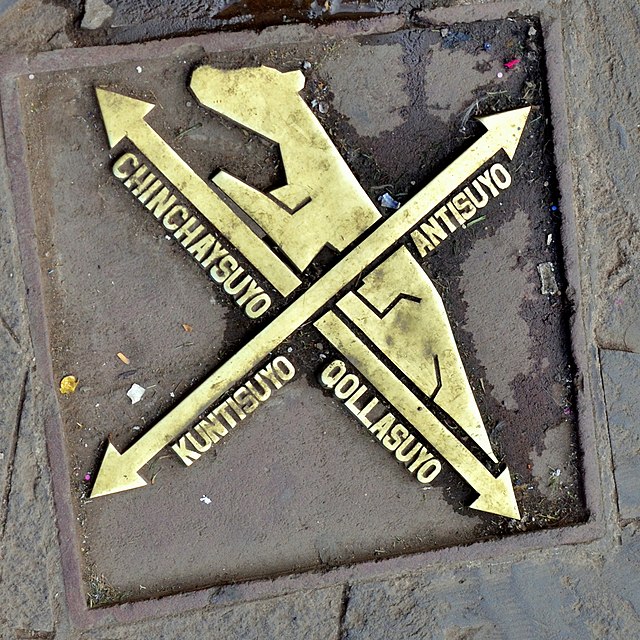The Inca road system was the most extensive and advanced transportation system in pre-Columbian South America. It was about 40,000 kilometres (25,000 mi) long. The construction of the roads required a large expenditure of time and effort.
Extent of the Inca road system
Section of the Inca road
Cusco, Peru - plaque indicating the 4 directions of the 4 regions (suyus) of the Inca Empire
A view of the Inca road climbing a hillside at the Mosollaqta lake, Peru
The Inca Empire, called Tawantinsuyu by its subjects, was the largest empire in pre-Columbian America. The administrative, political, and military center of the empire was in the city of Cusco. The Inca civilization rose from the Peruvian highlands sometime in the early 13th century. The Spanish began the conquest of the Inca Empire in 1532 and by 1572, the last Inca state was fully conquered.
Manco Cápac, First Inca, 1 of 14 Portraits of Inca Kings, Probably mid-18th century. Oil on canvas. Brooklyn Museum
An Inca prince accompanied by nobles, priests and warriors
The first image of the Inca in Europe, Pedro Cieza de León, Crónica del Perú, 1553
Sapa inkakuna, a 17th-century Cusco painting with the Inca lineages mentioned by colonial chronicles and their relationship with the royal queens of Cusco, which hide behind a complex representation of the Inca social organization.







